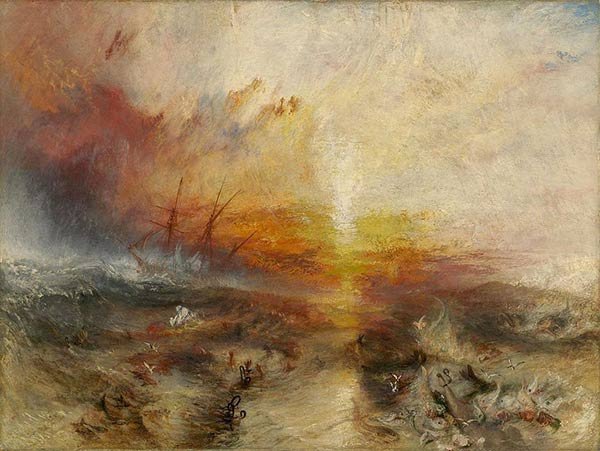Twisting, writhing, turbulent, chaotic, and romantic. These are all common terms associated with the pictures by monumental British artist J.M.W. Turner. These words encapsulate Turner’s language in paint: line, shape, edge, and texture. But can you understand his language of color?
At the heart of a captivating exhibition in France is the language J.M.W. Turner spoke through his vivid and expressive use of color. It may come as a surprise, but this type of retrospective has never been mounted before. “Turner and Colour” opened at the Hôtel de Caumont Centre d’art in France on May 4 and — as its title indicates — draws specific focus to the evolution of Turner’s palette over his illustrious career.
Organized chronologically, thematically, and geographically, the exhibition launches via a discussion with the young Turner as he grapples to learn and understand great colorists of the past, such as Rembrandt, Poussin, Titian, and Claude Lorrain. The show also highlights how new scientific and philosophical theories of color — namely from Isaac Newton and Goethe — helped the burgeoning master embark on bold experimental visions of colors, using new techniques and pigments.
Turner’s work has been cherished and beloved for hundreds of years, and viewers of this exhibition will emerge with a new understanding and translation of the artist’s visual language through his creative, expressive, and experimental use of color.
“Turner and Colour” opened on May 4 and will be on view through September 18. The show will then travel to the Turner Contemporary, where it will be on view from October 8 through January 8, 2017. To learn more, visit the Hôtel de Caumont Centre d’art.
This article was featured in Fine Art Today, a weekly e-newsletter from Fine Art Connoisseur magazine. To start receiving Fine Art Today for free, click here.
What Turner Understood About Color That You Need To Know








